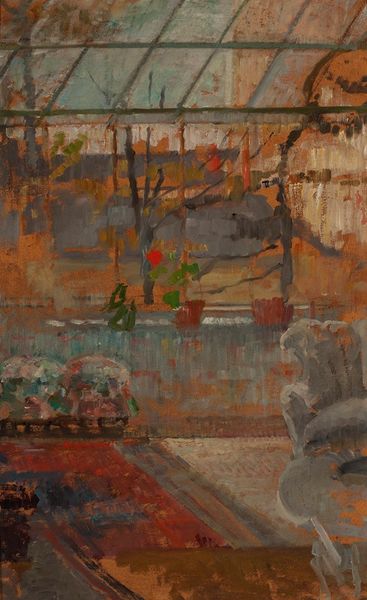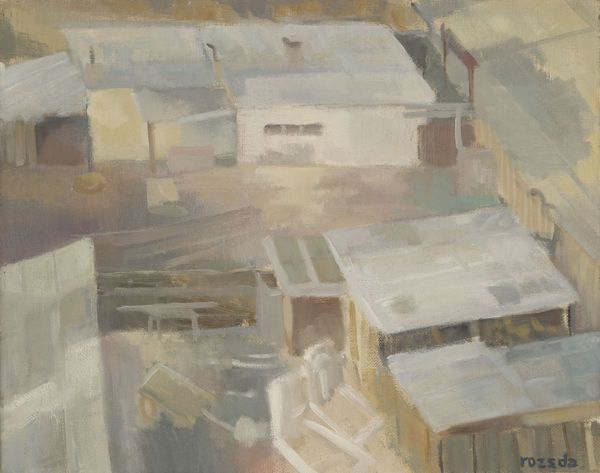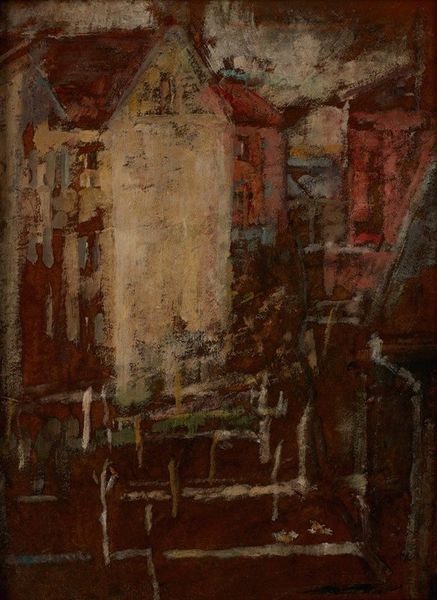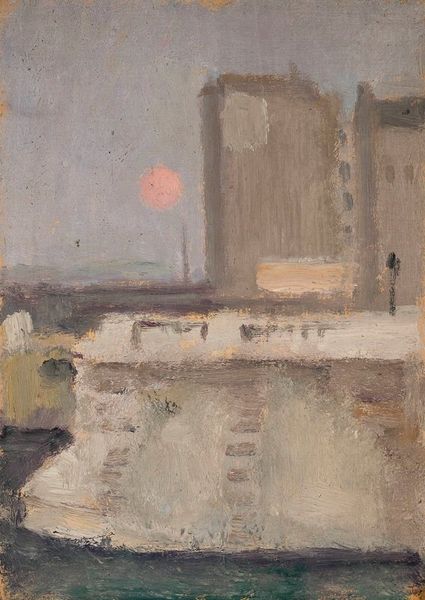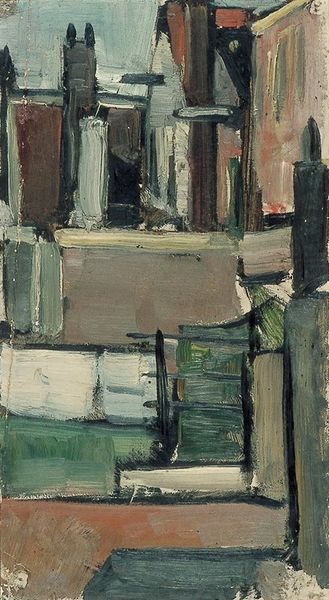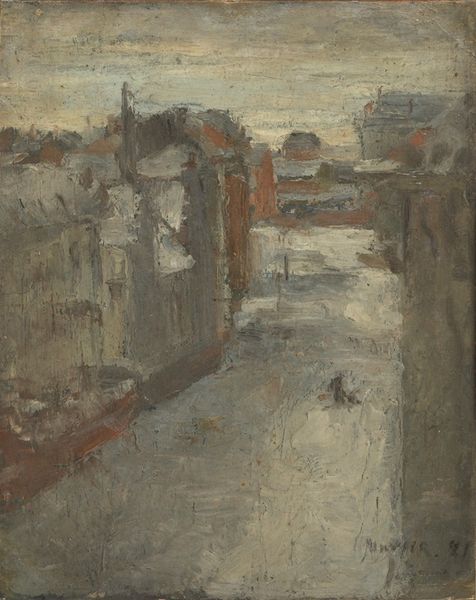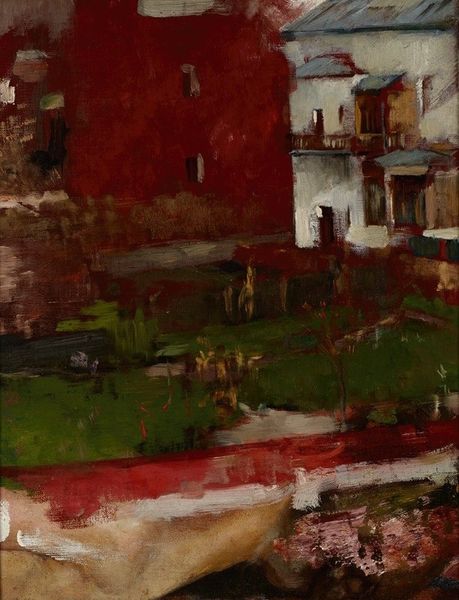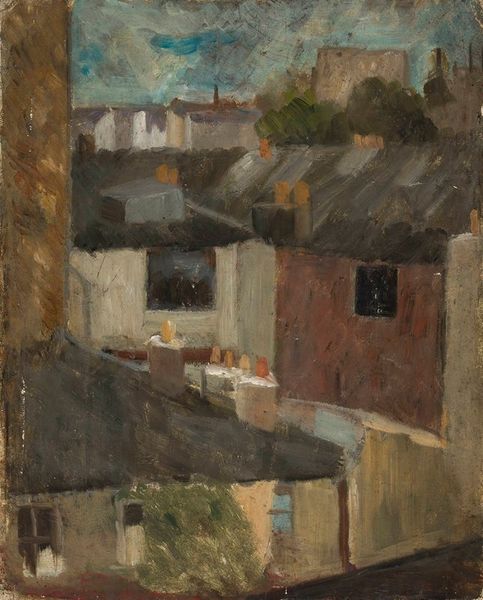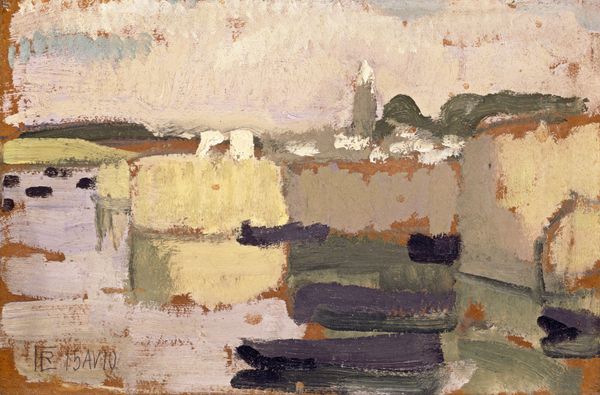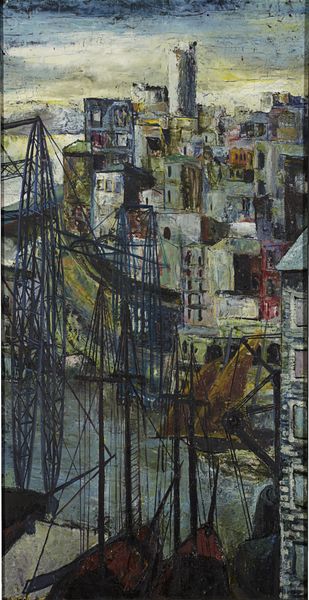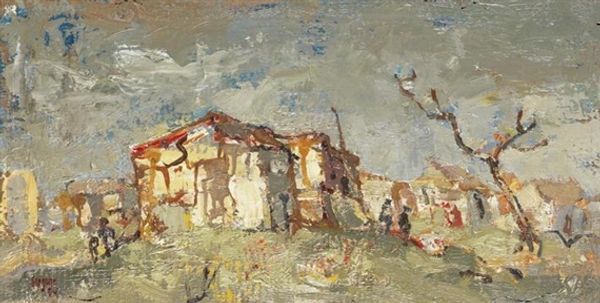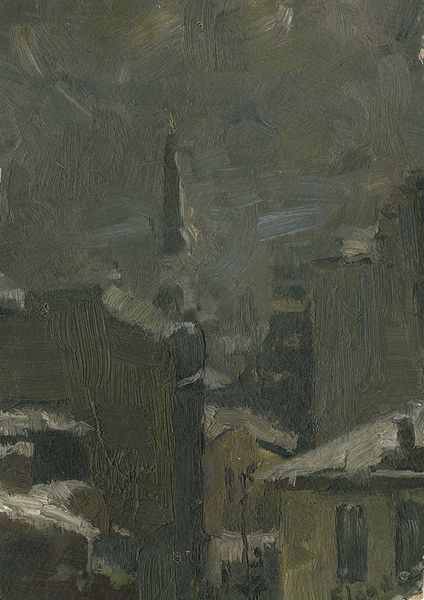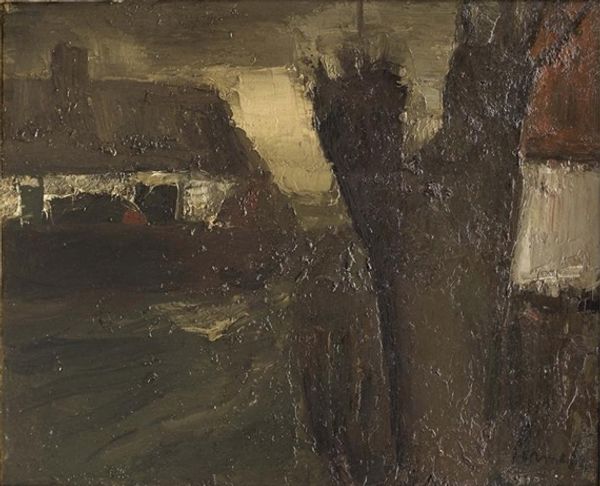
Copyright: Public domain
Editor: So, here we have Robert Julian Onderdonk’s "Hudson River View," painted in 1912 using oil paints. I'm struck by the contrast between the hazy, almost dreamy cityscape in the distance and the very tangible, almost gritty depiction of what seems to be laundry hanging on a rooftop in the foreground. How do you read that juxtaposition? Curator: That tension is exactly where the power lies. This painting, while seemingly a simple landscape, presents a visual stratification of class and labor. The romanticized view of the Hudson, the suggestion of industrial progress in the distance with its buildings, contrasts sharply with the intimate glimpse into daily domestic life of presumably working-class people struggling with very tangible problems. It's the stuff of survival hanging out to dry, isn't it? Editor: Yes, it’s hard to miss! And seeing it now, that feels really deliberate. Do you think the artist was conscious of making a political statement? Curator: Possibly, yes. Onderdonk lived during a period of intense social and economic disparity. The Impressionists, though not overtly political in the same way as some later movements, often captured these sorts of realities of urban existence. But it goes beyond simply *capturing*; the *selection* of this viewpoint – foregrounding the labor rather than erasing it for a solely picturesque image– invites us to consider who benefits from the ‘view.’ Editor: That makes me think about who is usually *in* the landscape, too. I mean, usually in a landscape painting, you might see wealthy people in fancy dress taking in nature, not just… laundry. Curator: Exactly! And consider the history of laundry as “women’s work.” Does the artist’s choice here, framing our perspective with a working space usually inhabited and operated by women, suggest a more female-centric reading of progress and urbanization? What’s visible and not visible, and *whose* labor makes this ‘view’ possible? Editor: Wow. I had not considered it in those terms at all. I just saw a pretty, hazy painting. Curator: Well, that "pretty, hazy" aesthetic allowed for a visual space where realities like these could be contemplated, maybe for the first time, by a broader audience. So in its own way, the painting can operate as an understated challenge.
Comments
No comments
Be the first to comment and join the conversation on the ultimate creative platform.
